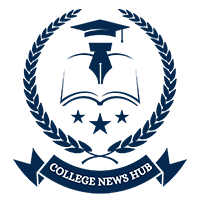Watching and listening to a pianist’s efficiency is an immersive and fulfilling expertise. The pianist and the instrument, with a mix of talent, coaching, and presence, create a sequence of memorable moments for themselves and the viewers. However is there a means to enhance the efficiency and our understanding of how the performer and their instrument work collectively to create this magic, whereas additionally minimizing performance-related accidents?
Mi-Eun Kim, director of keyboard research in MIT’s Music and Theater Arts Part, and Praneeth Namburi PhD ’16, a analysis scientist in MIT’s Institute for Medical Engineering and Science, are investigating how the physique works when pianists play. Their joint challenge, The Biomechanics of Assimilating a New Piano Ability, goals to develop mechanistic insights that would rework how we perceive and train piano approach, scale back performance-related accidents, and bridge the hole between inventive expression and biomechanical effectivity.
Their challenge is amongst these lately chosen for a SHASS+ Connectivity Fund grant by means of the MIT Human Perception Collaborative.
“The challenge emerged from a convergence of pursuits and private experiences,” Namburi says. “Mi-Eun witnessed widespread accidents amongst fellow pianists and noticed how these accidents may derail careers.”
Kim is a famend pianist who has carried out on phases all through the US, in Europe, and in Asia. She earned the Liszt-Garrison Competitors’s Liszt Award and the Corpus Christi solo prize, amongst different honors. She teaches piano and chamber music by means of MIT Music’s Emerson/Harris Program and chamber music by means of MIT’s Chamber Music Society. She earned superior levels from the College of Michigan and holds a bachelor of arts diploma in historical past from Columbia College.
Namburi’s work focuses on the biomechanics of environment friendly, expressive, and coordinated motion. He attracts inspiration from artists and athletes in specialised motion disciplines, resembling dancing and fencing, to analyze expert motion. He earned a PhD in experimental neuroscience from MIT and a bachelor of engineering diploma in electrical and digital engineering from Singapore’s Nanyang Technological College.
Pursuing the challenge
Kim and Namburi arrived at their challenge by taking totally different roads into the humanities. Whereas Kim was finishing her research on the College of Michigan, Namburi was taking dance classes as a passion in Boston. He discovered that each expressive and sustainable actions would possibly share a standard denominator. “A key perception was that elastic tissues play a vital position in coordinated, expressive, and sustainable actions in dance — a precept that would prolong past dancing,” he notes.
“We acknowledged that finding out elastic tissues may make clear lowering harm threat, in addition to understanding musical expression and embodiment within the context of piano taking part in,” Kim says.
Kim and Namburi started collaborating on what would change into their challenge in October 2023, although the groundwork was in place months earlier than. “A visiting scholar working with me on a analysis challenge finding out pianists within the MIT.nano Immersion Lab reached out to Mi-Eun in summer season 2023,” Namburi recollects. A shared Instagram video displaying their setup with movement seize sensors and a pianist taking part in Chopin on a digital keyboard sparked Kim’s curiosity. The Immersion Lab is an open-access, shared facility for MIT and past devoted to visualizing, understanding, and interacting with massive, multidimensional information.
“I could not make sense of all of the sensors, however instantly observed they had been utilizing a digital keyboard,” she says.
Kim needed to raise these research’ high quality by pairing the musicians with the right tools and instrument. Whereas the digital pianos they’d beforehand used are moveable and supply musical instrument digital interface (MIDI) information, they don’t provide the identical expertise as an actual piano. “Pianists dream of taking part in on an excellent instrument — a 9-foot live performance grand with completely regulated 24-inch keys that responds to each musical intention with out resistance,” Kim says.
The researchers introduced a Spirio grand piano to the Immersion Lab and noticed that the instrument may each seize pianists’ hammerstrike velocities and reproduce them to play again the efficiency. Monitoring Kim’s efficiency on the live performance grand piano, for instance, each famous marked variations in her taking part in fashion.
“Regardless of all of the sensors, lighting, and observers, taking part in felt so pure that I forgot I used to be in a lab,” she says. “I may focus purely on the music, with out worrying about adapting to a smaller keyboard or digital sound.”
This setup allowed them to watch pianists’ pure actions, which was precisely what Kim needed to check.
Throughout Unbiased Actions Interval 2025, Kim and Namburi hosted a brand new course, Biomechanics of Piano Taking part in, within the Immersion Lab. College students and college from MIT, Harvard College, the College of Michigan, the College of Toronto, and the College of Hartford took half. Individuals discovered methods to use movement seize, accelerometers, and ultrasound imaging to visualise alerts from the physique throughout piano taking part in.
Observations and outcomes
If the effectivity and perceived fluency of an professional pianist’s actions comes from harnessing the physique’s inherent elastic mechanisms, Kim and Namburi imagine, it’s doable to revamp how piano taking part in is taught. Every needs to cut back occurrences of playing-related accidents and enhance how musicians be taught their craft.
“I would like us to bridge the hole between inventive expression and biomechanical effectivity,” Namburi says.
By way of their exploratory classes on the Immersion Lab, Kim and Namburi discovered frequent floor, gathering details about their observations of and experiences in piano and dance by means of sensor know-how, together with ultrasound.
Past these, Kim noticed potential for remodeling piano pedagogy. “Conventional instructing depends closely on subjective descriptions and metaphors handed down by means of generations,” she says. “Whereas helpful, these approaches could possibly be enhanced with goal, scientific understanding of the bodily mechanisms behind expert piano efficiency — evidence-driven piano pedagogy, if you’ll.”






























































